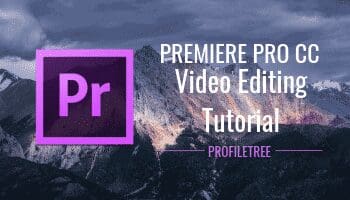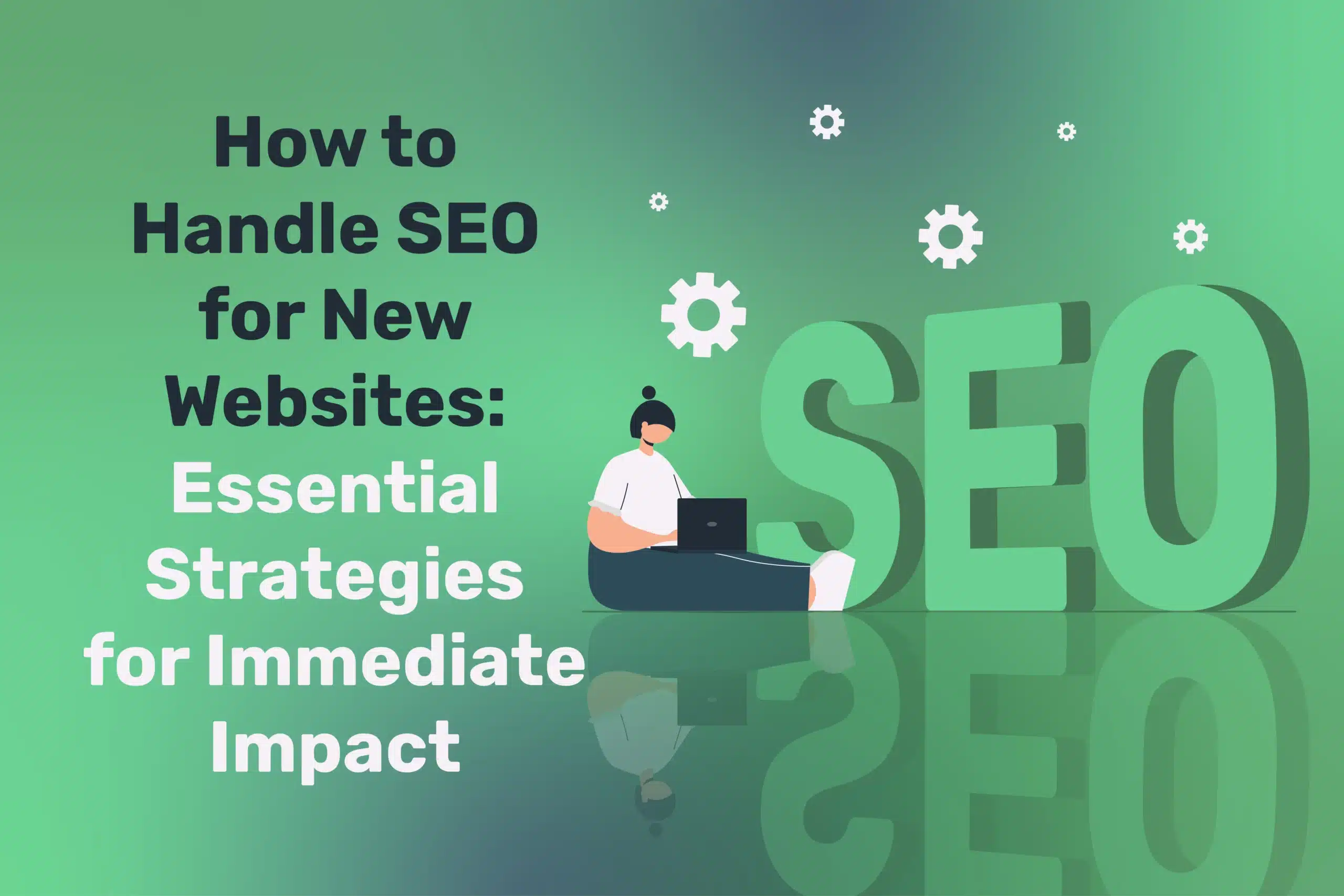
Using Video to Strengthen SEO and User Engagement
Table of Contents
Content forms the bedrock of discoverability in the ever-evolving realm of search engine optimisation (SEO). Yet focusing on blogs and static pages alone can miss a potent ally: video. Embedding or producing video content can substantially boost site engagement—lowering bounce rates and increasing dwell time—two signals that many SEO experts believe improve search rankings. Moreover, the video can generate additional traffic via YouTube or other platforms, broadening your digital footprint.
This article explores how video enhances SEO and user engagement, from short explainers to in-depth tutorials. We’ll look at best practices for video creation, embedding, metadata, and cross-channel promotion that can help you climb SERPs while deeply resonating with visitors.
“Search engines aim to deliver valuable user experiences. By incorporating relevant, engaging video, your site signals it offers more than text—a dynamic resource. That often translates to stronger search presence,” explains Ciaran Connolly, Director of ProfileTree.
Why Video Is a Game-Changer for SEO
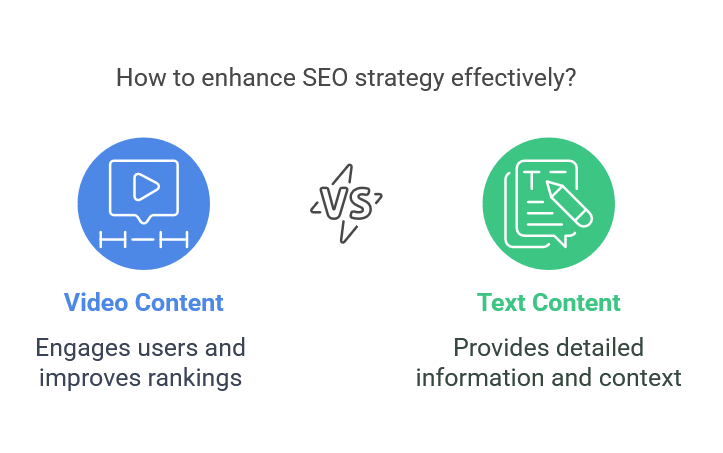
The video has emerged as a pivotal force in SEO because it captivates audiences, keeps them on your pages longer, and ultimately signals to search engines that your content is highly engaging. This enhanced user interaction often leads to better rankings and a competitive edge in today’s crowded digital marketplace.
Higher Dwell Time
When users encounter a compelling video on a webpage, they often watch more. This extended dwell time indicates to Google that the page is engaging. Some site owners see dwell time improvements of up to 60% after incorporating relevant video, thereby reducing bounce rates.
Rich Snippets in SERPs
Video-rich snippets can appear with a thumbnail in Google’s results, attracting more clicks. Your result stands out if properly marked with schema (like VideoObject), boosting CTR. Similarly, hosting on YouTube with well-optimised titles, descriptions, and tags can help your video rank for targeted keywords.
Expanded Keyword Opportunities
Video transcripts or subtitles can open text-based indexing for more keywords, improving discoverability. Additionally, you can rank for “how-to” or “tutorial” searches if your video addresses user queries thoroughly.
Social Signals and Backlinks
Videos frequently see higher share rates on social media. If your content is original or highly informative, other websites might embed or link to your video, leading to valuable backlinks—another SEO booster.
Planning Videos for Maximum SEO Impact
Planning your videos with SEO in mind ensures that every second of footage serves a clear purpose, aligning with keyword intent and user interests. By carefully choosing topics, length, and structure, your video content becomes more discoverable and engaging—ultimately delivering measurable results for your brand.
Align Video Topic with User Intent
Research keywords your audience uses—like “how to fix [X problem]” or “best tips for [Y scenario].” You have strong potential for organic SEO traffic if you produce a short, crisp video answering that search query.
Example: A garden supply store might post “How to Prune Roses Step-by-Step,” embedding the video on a blog post featuring textual details. This synergy covers both user reading preferences and those who prefer visuals.
Keep Content Relevant and Concise
Long videos risk losing viewer attention. If your topic demands in-depth coverage, consider timestamping or splitting into segments. 2–5 minutes for general topics often suffices to keep watchers engaged. The more coherent and valuable the content, the stronger the SEO signals from engagement metrics.
Link to Broader Site Content
Encourage viewers to “learn more” by linking to supporting pages, products, or sign-up forms. This approach guides users deeper into your site, boosting internal link structure and possibly conversions. If you can seamlessly embed relevant calls to action, watchers are more likely to explore further.
On-Brand Style
Ensure your videos reflect consistent brand aesthetics—logos, colour palettes, and intro/outro sequences. This fosters brand recall and a professional image. Google sees returning visitors and brand searches positively, further boosting site authority.
Technical Considerations: Embedding vs. Hosting
When incorporating video content, you must decide whether to embed it from third-party platforms (like YouTube) or self-host it on your server. Each approach carries unique benefits and drawbacks—from bandwidth considerations to brand control—that can impact your site’s overall SEO and user experience.
YouTube Embeds
Pros: YouTube is the world’s second-largest search engine, letting you tap into that discovery potential. It handles hosting overhead and streaming quality and automatically adapts to device formats. Also, embedding a YouTube video is easy, and YouTube watch counts might enhance social proof.
Cons: The user might click through to YouTube, leaving your site. Also, post-video suggestions might show competitor content if you don’t disable them (though that’s partially changed in YouTube’s settings). Some enterprise sites prefer more controlled experiences.
Self-Hosting or Using Platforms Like Wistia/Vimeo Pro
Pros: You have more brand control, and there are no external ads or competitor links at the video end. You can gather detailed viewer analytics, insert clickable CTAs, or style the player to match your brand.
Cons: Bandwidth costs can spike if your site sees heavy traffic. You might lose the direct search traffic from YouTube’s massive user base unless you mirror content on both platforms.
Performance and Site Speed
Video files can be significant. Storing them incorrectly might slow page loads, harming SEO. If self-hosting, compress files and use adaptive streaming solutions. For embedding, use lazy loading techniques so the page doesn’t fully load the video until scrolled into view.
“Striking the right hosting strategy depends on brand control vs. discoverability priorities. Many businesses embed YouTube for public videos but use premium hosting for internal or advanced marketing content,” advises Ciaran Connolly.
Video Optimisation Tactics for SEO
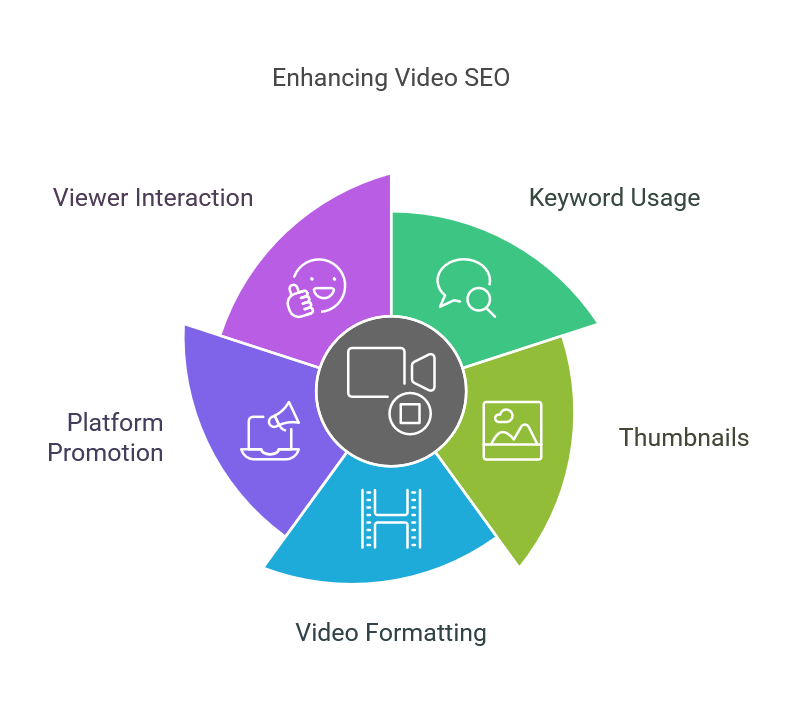
Optimising your video content for search goes beyond simply uploading it; it requires thoughtful metadata, transcripts, and strategic promotion. Refining each element—from titles and tags to sitemaps and structured data—can significantly improve discoverability and user engagement, ultimately strengthening your SEO.
Keyword-Rich Titles and Descriptions
If posted on YouTube or Vimeo, your video’s title and description are prime real estate. Insert relevant keywords naturally, including brand or product terms. For the embedded version on your site, replicate or adapt that info so search engines see consistent metadata.
Tags and Categories
Platforms like YouTube allow specific tags. Use them wisely—synonyms, core topics, subtopics. Avoid spammy over-tagging. A few well-chosen tags typically yield better algorithmic clarity than random lists of tangential terms.
Transcriptions or Subtitles
Providing transcripts below the embedded video or uploading subtitles/captions helps search engines parse your video content. This text-based layer improves accessibility and feeds additional context for SEO. Tools like Rev, Descript, or AI-based transcribers simplify the process.
Video Sitemaps and Structured Data
Implementing VideoObject schema markup on your page helps Google identify video details—duration, thumbnail, and description. Creating a video sitemap ensures search engines discover all relevant videos on your domain, boosting the chance of rich snippets.
Engaging Thumbnails
A custom thumbnail—featuring crisp visuals, short text, or a brand logo—can drastically improve click-through rates in SERPs (where possible) and within platform feeds. Avoid misleading imagery, but ensure it conveys the video’s essence.
Boosting User Engagement with Video on Your Site
Video can transform how visitors interact with your site—if used strategically. Placing video content that naturally complements page information and encourages next-step actions can foster a more immersive experience that boosts dwell time and conversions.
Strategic Placement
Position videos above the fold for core product demos or brand intros. Integrate near-relevant text if it’s secondary content (like a behind-the-scenes clip). A massive video at the top of every page can slow loading or annoy visitors who prefer text—balance is key.
Summaries and Additional Resources
Some viewers prefer scanning text first before deciding whether to watch. Provide bullet points or a summary adjacent to the video. Add links to deeper resources or related articles. This synergy caters to varied user preferences while ensuring your SEO remains robust with textual content.
Gamify or Incentivise Watching
Consider awarding “completion badges” or discount codes for educational or product training after viewing specific segments. This approach can significantly reduce helpdesk queries or bounce rates, rewarding watchers.
Cross-Selling or CTA Integration
During or after the video, highlight relevant products, sign-up forms, or a “Book a Demo” button. Balance subtlety—overtly pushing multiple CTAs can be off-putting. Typically, a final CTA in the outro works well if the content has built enough trust.
Harnessing Social Media for Video Visibility
Social media platforms extend the reach of your video content far beyond your website. By sharing teasers, live streams, and bite-sized clips, you can tap into new audiences, drive traffic back to your main video or site, and strengthen brand awareness across diverse channels.
Teasers and Snippets
Cut a short, intriguing snippet (under 30 seconds) for platforms like TikTok, Instagram Reels, or Twitter. Direct watchers to the full video on your site or YouTube channel. This cross-pollination strategy expands reach beyond your usual site visitors.
Live Streams
Platforms like Facebook Live, YouTube Live, or LinkedIn Live let you stream events or Q&As. Live content fosters immediate engagement—comments and real-time feedback. Post-event, the recorded stream can be re-edited or highlighted for on-demand viewing.
Story Features
Instagram or Facebook Stories can house ephemeral behind-the-scenes glimpses, boosting brand authenticity. Direct viewers to your main video link if they want more in-depth content. This layering approach nurtures curiosity across multiple platforms.
Engaging Influencers or Partners
Collaborate with industry influencers to co-create or co-promote your videos. They can share them with their followers, injecting new audiences into your funnel. Ensure the content resonates with their brand, too—audiences notice forced or misaligned partnerships.
“A well-rounded approach uses social channels for quick snackable clips, funneling serious watchers to your website or main channel for full-length content,” says Ciaran Connolly.
Monitoring Results and Iterating
Tracking viewers’ engagement with your video content is essential for refining future strategies. By analysing metrics such as watch time, drop-off points, and social shares, you can identify what resonates most and continuously improve the performance and relevance of your video efforts.
Analytics to Watch
- View Duration: If most watchers drop off at 20% in, rework pacing or introduction.
- Engagement: Comments, likes, shares, session time on your site post-video.
- Traffic Source: Are watchers coming from search, social, or direct links?
- Goal Conversions: Sign-ups, purchases, or form fills triggered by video watchers.
Using Heatmaps or Scroll Maps
Some tools track how users interact with your page, revealing whether they skip or watch the video halfway. If few click play, the thumbnail or description needs improvement, or other design elements overshadow the video.
A/B Testing
Experiment with different video placements or variations. Test pages with vs. without an embedded video. Or compare two versioned videos—slightly different intros and lengths—to see which yields better engagement or leads.
Continual Content Refresh
Videos can become outdated. For instance, referencing old prices or features. Out-of-date content can hamper credibility. Periodically review top-performing videos—if they remain relevant, keep them featured; if not, create updated versions.
Potential Pitfalls and Their Solutions
Even the most powerful SEO tool can backfire if misapplied, and video is no exception. From excessive load times to irrelevant content, these common pitfalls can undercut your efforts. By recognising and resolving them proactively, you’ll maintain a practical, user-friendly video strategy supporting your marketing goals.
Overloading Pages with Multiple Videos
Multiple autoplay videos can hog resources, slow load speeds, and overwhelm users. Use one focal video or present a gallery with clear labels. If you must embed many, ensure lazy loading so they only load on user interaction.
Irrelevant or Generic Content
If the video content doesn’t match the page’s keyword intent or user expectations, bounce rates might spike. Ensure synergy: a page about “gardening tips” should embed a relevant gardening tutorial, not a random brand reel.
Technically Inaccessible Video
No subtitles or transcripts frustrate hearing-impaired visitors or those who prefer reading quickly. Also, check if your site’s mobile version appropriately scales or if the video player is cut off. Test across multiple devices and browsers.
Neglecting CTA
A brilliant video can stoke interest, but watchers do nothing afterwards without prompt. A subtle on-screen graphic or a short concluding voiceover can direct them to “Sign up,” “Learn more,” or “Contact us.” Make it easy for them to take the next step.
Looking Ahead: The Future of Video SEO and Engagement
Video SEO is poised to become even more immersive and data-driven as technology evolves. From AI-enhanced personalisation to emerging AR/VR experiences, brands that embrace these advancements can create deeper audience connections and stay ahead of the competition.
AI-Enhanced Personalisation
Sites might soon show dynamically curated video content per user based on browsing history or interests. AI can also create short “best bits” from longer videos to match user preferences or highlight relevant sections—like advanced versions of chapter marking.
AR/VR Video Experiences
Augmented or virtual reality could reshape how users engage with brand visuals, such as immersive product walk-throughs or interactive training. Though not mainstream for all industries yet, early adopters might reap huge engagement boosts.
Voice Search Integration
As voice search grows, optimising video content so it’s discoverable by voice queries matters. Transcripts or structured data might let voice assistants read snippet answers from your video. Ensuring you have straightforward Q&A sections in your content helps.
Cross-Platform Analytics
Unified dashboards pulling data from YouTube, your site, and social channels will become standard. Marketers can see entire user journeys—someone found your brand on YouTube, visited your site, watched an embedded tutorial, and then converted. This holistic insight drives better strategic decisions.
Elevating Search Rankings and User Loyalty with Video
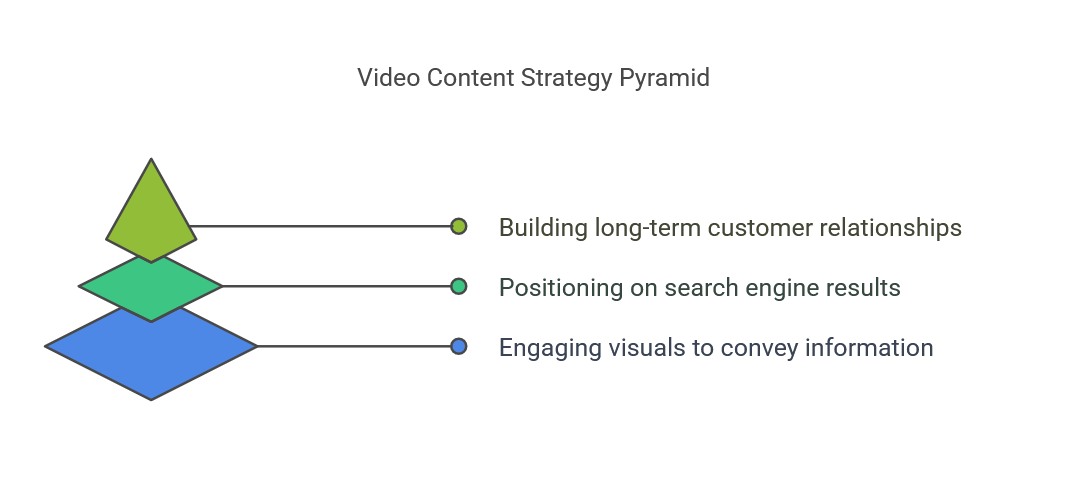
By integrating video strategically—choosing topics that align with user intent, employing metadata best practices, hosting or embedding in ways that complement your site’s design—you can simultaneously improve SEO signals and captivate visitors, building more profound engagement. Videos encourage longer dwell times, reduce bounce rates, and often stand out in search results via rich snippets, amplifying brand visibility.
Yet success requires more than throwing any video onto a page. Thoroughly plan the content, ensure synergy with textual or CTA elements, optimise technical details (structured data, transcripts), and monitor performance metrics. Continual refinement will help your brand stay relevant in a digital sphere that increasingly prioritises meaningful, high-quality video experiences.
Conclusion: Strengthen SEO and User Engagement
Video content is no longer a nice-to-have add-on; it’s a powerful tool that amplifies SEO strategies significantly. By optimising video files, crafting explicit metadata, and carefully choosing where and how to host them, you can increase dwell time, reduce bounce rates, and potentially gain richer SERP visibility. The key is to align video content closely with user intent, embed it to support site speed and integrate strong calls to action or supportive text. You can refine your video efforts for maximum return through ongoing measurement and iteration—checking analytics, heatmaps, or drop-off points. As digital platforms evolve, embracing video boosts search rankings and forges deeper connections with your audience.



